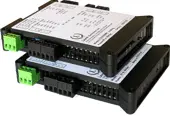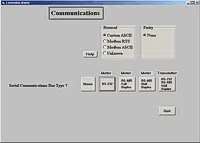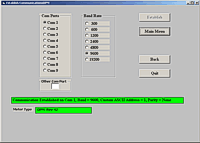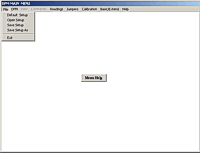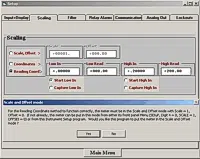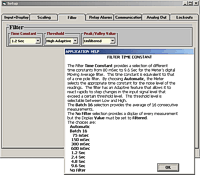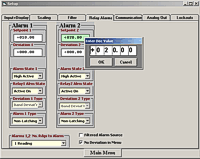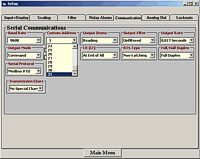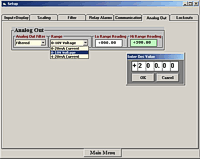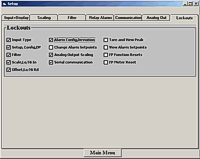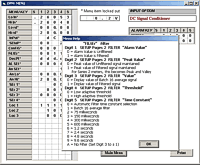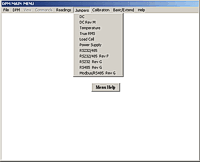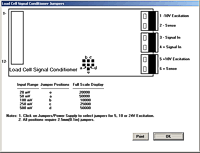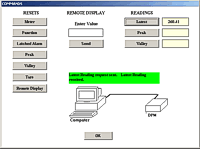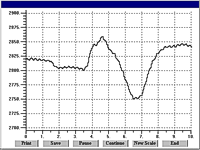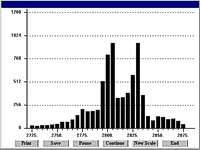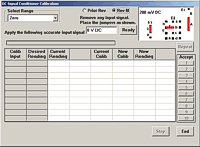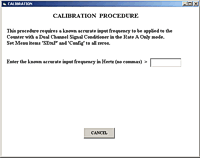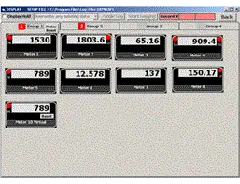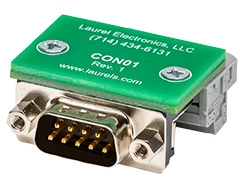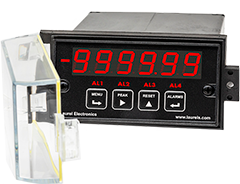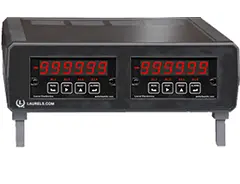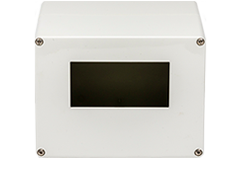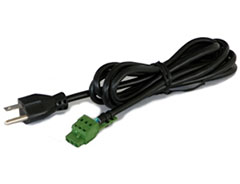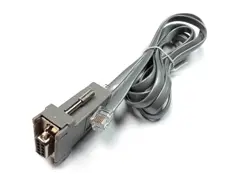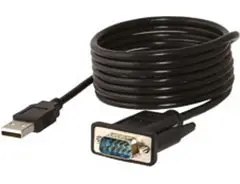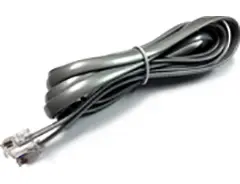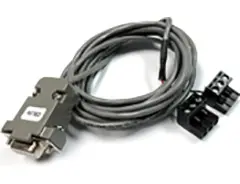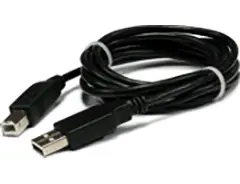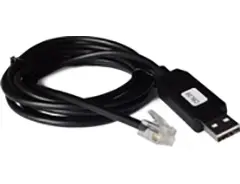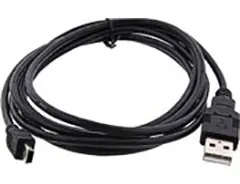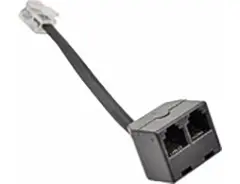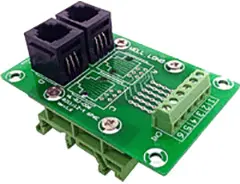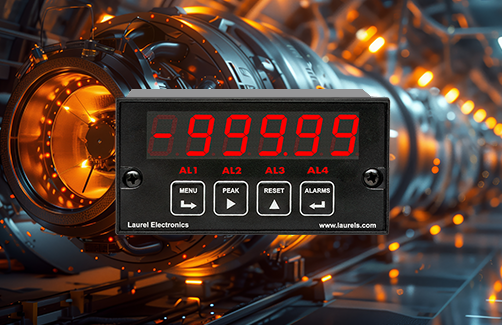
Certificates of Compliance
Features
- Reads 100Ω platinum, 10Ω copper & 120Ω nickel RTDs
- 2, 3 or 4-wire connection with lead resistance compensation
- Accuracy ±0.01% of reading ±0.04°C (±0.07°F)
- Selectable 1°, 0.1°, or 0.01° resolution, °C, °F, K or R
- All input ranges are user selectable and factory calibrated
- Up to 60 conversions per second, Ideal for peak or valley capture
- Digital span adjust from 0 to ±99,999, zero adjust from -99,999 to +99,999
- Front panel scalable to ±99,999 for use with current shunts
- 1/8 DIN size with bright red or green 0.56" (14.2mm), high LED digits
- Power 85-264 Vac / 90-300 Vdc or 10-48 Vdc / 12-32 Vac (isolated)
- Operating temperature from -40°C to 70°C (-40°F to 158°F)
- Wide choice of Plug-in-Play options:
- 2 or 4 relays, mechanical or solid state, for alarm or control (isolated)
- 1 or 2 Analog output, 4-20 mA, 0-20 mA, 0-10V, or -10V to +10V (isolated)
- Communications: Ethernet, WiFi, USB, RS232, RS485 (isolated)
The Laureate™ 1/8 DIN Panel Meters for RTD'S
is factory calibrated for four Resistance Temperature Detector (RTD) types: 100-ohm platinum (Pt100) with DIN alpha of 0.00385, 100-ohm platinum (Pt100) with ANSI alpha of 0.003902, 10-ohm copper with alpha of 0.00427, and 120-ohm nickel with alpha of 0.00672. The entire span of each RTD type is presented in a single range. The RTD type, unit of measure (°C or °F) and resolution (1°, 0.1° or 0.01°) are selectable from the front panel or via the panel meter's serial interface. Display in Kelvin or Rankin is selected by offsetting the Celsius or Fahrenheit ranges. Typical accuracy is better than ±0.1°C (±0.2°F).RTD connections can be via 2, 3 or 4 wires. With 3 or 4-wire connections, the meter automatically compensates for changes in lead resistance to the sensor. With 2-wire connection, the panel meters can measure and then subtract the lead wire resistance.
All RTD types are factory-calibrated, with calibration factors for each range securely stored in an onboard EEPROM. These factors can be scaled via software to accommodate external shunts, enabling field replacement of signal conditioner boards without necessitating recalibration of the associated panel meters. For optimal accuracy, factory recalibration is recommended annually. All Laurel Electronics instruments undergo factory calibration using the industry-leading Fluke calibrators, which are recalibrated yearly and certified traceable to national standards, ensuring the highest level of precision and reliability.
Laureate Panel Meters are easily programmed with Laurel’s free Instrument Setup Software, downloadable from our website and compatible with Windows PCs, requiring a data interface board for setup.
High read rate of up to 50 or 60 conversions per second, the Laureate™ Panel Meters use Concurrent Slope (US Pat. 5,262,780) analog-to-digital conversion to integrate signals over a full power line cycle (50 Hz or 60 Hz). This read rate enables peak and valley capture, real-time computer interfacing, and control applications. Peak and valley values are automatically captured and can be viewed using Laurel’s free Instrument Setup Software (compatible with Windows PCs) or transmitted as serial data.
- An unfiltered selection provides true peak and valley readings and aids in control applications.
- A batch average filter selection averages each 16 conversions.
- An adaptive moving average filter selection provides a choice of 8 time constants from 80 ms to 9.6 seconds. When a significant change in signal level occurs, the filter adapts by briefly switching to the shortest time to follow the change, then reverts back to its selected time constant. An Auto setting selects the time constant selection based on signal noise.
Two tare functions: auto-tare and manual tare. In auto-tare, an input line is grounded by an external pushbutton. In manual tare, the tare value can be entered manually via a control input pushbutton or using Laurel's free Instrument Setup Software.
Peak and valley values are automatically captured. These may be displayed via a front panel pushbutton command or control signal at the rear connector, or be transmitted as serial data.
Two rear panel control Inputs (CMOS/TTL levels, logic 0 = tied to digital ground, logic 1 = open) or dry contacts that can be set to control / activate 14 meter commands.
RTD Connections with Excitation & Lead Compensation
RTD hookup can be via 2, 3 or 4 wires to the J5 connector. The panel meters apply an excitation current of 256 µA (Pt100 and Ni120) or 5 mA (Cu10).
 |
In 4-wire hookup, different pairs of leads are used to apply the excitation current and sense the voltage drop across the RTD for ratiometric operation, so that the IR drop across the excitation leads is not a factor. |
 |
In 3-wire hookup, the panel meters sense the combined voltage drop across the RTD plus two excitation leads. It also senses the voltage drop across one excitation lead, and then subtracts twice this voltage from the combined total. This technique effectively subtracts all lead resistance and compensates for ambient temperature changes if the two excitation leads are identical. |
 |
In 2-wire hookup, the panel meters sense the combined voltage drop across the RTD and both lead wires. The voltage drop across the lead wires can be measured by shorting out the RTD during meter setup, and this voltage is then automatically subtracted from the combined total. However, changing resistance of the lead wires due to ambient temperature changes will not be compensated. |
Quick Selection Guide
| RTD Metal |
Alpha | R at 0°C |
R at top of range |
Excitation Current* |
Range | Max Error |
|---|---|---|---|---|---|---|
| Platinum Pt100 |
0.003850 (DIN) |
100Ω | 390.48Ω at 850°C |
196 µA | -202°C to +850°C -331°F to +1562°F |
±0.03°C ±0.01% of rdg ±0.05°F ±0.01% of rdg |
| Platinum Pt100 |
0.003902 (ANSI) |
100Ω | 394.36Ω at 850°C |
196 µA | -202°C to +631°C -331°F to +1168°F |
±0.04°C ±0.01% of rdg ±0.07°F ±0.01% of rdg |
| Nickel Ni120 |
0.00672 | 120Ω | 380.31Ω at 260°C |
196 µA | -80°C to +260°C -112°F to +500°F |
±0.05°C ±0.01% of rdg ±0.09°F ±0.01% of rdg |
| Copper Cu10 |
0.00427 | 9.035Ω | 19.116Ω at 260°C |
5.0 mA | -100°C to +260°C -148°F to +500°F |
±0.05°C ±0.01% of rdg ±0.09°F ±0.01% of rdg |
| * The applied excitation current is sensed by the meter, which operates in a ratiometric mode and automatically compensates for any changes in excitation. | ||||||
| Recalibration: All ranges are calibrated at the factory. Recalibration is recommended every 12 months. | ||||||
| Display | |
|---|---|
| Readout | 5 LED digits, 7-segment, 14.2 mm (.56") |
| Color | Red or green LED |
| Indicators | Minus sign, 2 red LED lamps |
| Accuracy | |
| Calibration, Pt 100 DIN | Per IEC 751 (ITS-90) |
| Calibration, Pt 100 ANSI | NIST Monograph 126 |
| Calibration, Ni 120 | DIN 43760 |
| Max error at 25°C, Pt100 | ±0.04°C (±0.07°F) ±0.01% of reading |
| Span tempco | ±0.003% of reading/°C |
| Zero tempco | ±0.03 deg/deg |
| Provision for user calibration | Multiplier of RTD resistance plus offset in degrees |
| Electrical | |
| Connection | 2, 3 or 4-wire |
| Overvoltage protection | 125 Vac |
| Open sensor indication | Flashes full-scale |
| Sensor lead resistance | 2-wire, 10 mdeg/Ω/deg up to 10Ω |
| Tempco per conductor | 3 & 4-wire, 10 mdeg/Ω/deg up to 100Ω |
| A-to-D Conversion | |
| Technique | Concurrent Slope™ (Pat 5,262,780) |
| A-to-D rate | 60/s at 60 Hz, 50/s at 50 Hz |
| Output update rate | 56/s at 60 Hz, 47/s at 50 Hz |
| Display update rate | 3.5/s at 60 Hz, 3/s at 50 Hz |
| Power Supply Boards (one required) | |
| Voltage, standard | 85-264 Vac or 90-300 Vdc |
| Voltage, optional | 12-32 Vac or 10-48 Vdc |
| Frequency | DC or 47-63 Hz |
| Power consumption (typ. base meter) | 1.2W @ 120Vac, 1.5W @ 240Vac, 1.3W @ 10Vdc, 1.4W @ 20Vdc, 1.55W @ 30Vdc, 1.8W @ 40Vdc, 2.15W @ 48Vdc |
| Power Isolation | 250V rms working, 2.3 kV rms per 1 min test |
| Ratiometric operation | Automatically compensates for changes in excitation level. |
| Analog Output Board (one optional) | |
| Output levels | 4-20 mA, 0-20 mA, 0-10V, -10 to +10V (jumper selectable) |
| Current compliance | 2 mA at 10V ( > 5 kΩ load) |
| Voltage compliance | 12V at 20 mA (< 600 Ω load) |
| Scaling | Zero and full scale adjustable from -99999 to +99999 |
| Resolution | 16 bits (0.0015% of full scale) |
| Step function response | 80 ms to 99% of final value (typ) |
| Isolation | 250V rms working, 2.3 kV rms per 1 min test |
| Relay Output Boards (one optional) | |
| Dual magnetic relays | 2 Form C, 10A max, 440Vac or 125Vdc max, 2500VA or 300W |
| Quad magnetic relays | 4 Form A (NO), 10A max, 440Vac or 125Vdc max, 2500VA or 300W |
| Dual solid state relays | 2 Form A (NO), AC or DC, 0V - 400V, 120Ma, 35Ohms (max at On-State) |
| Quad solid state relays | 4 Form A (NO), AC or DC, 0V - 400V, 120Ma, 35Ohms (max at On-State) |
| Relay commons | Isolated commons for dual relays or each pair of quad relays |
| Relay isolation | 250V rms working, 2.3 kV rms per 1 minute test |
| Step function response | 30 ms (typ) for contact relays, 25 ms (typ) for solid state relays |
| Relay latching modes | Latching or non-latching |
| Relay active modes | Active on or off, active high or low |
| Hysteresis modes | QA passband mode, split hysteresis, span hysteresis |
| Communication Boards (one optional) | |
| Board selections | RS232, RS485 with dual RJ11 connectors, RS485 with dual RJ45 connectors, USB, Ethernet, USB-to-RS485 gateway, Ethernet-to-RS485 gateway, WiFi with built-in antenna plus USB & RS485, WiFi with external antenna plus USB & RS485 |
| Protocols | Laurel Custom ASCII (serial), Modbus RTU (serial), Modbus TCP (Ethernet or WiFi) |
| Digital addresses | 247 (Modbus), 31 (Laurel ASCII), |
| Isolation | 250V rms working, 2.3 kV rms per 1 min test |
| Environmental | |
| Operating temperature | -40°C to 70°C (-40°F to 158°F) |
| Storage temperature. | -40°C to 85°C (-40°F to 185°F) |
| Relative humidity | 95% at 40°C, non-condensing |
| Protection | NEMA-4X (IP-65) when panel mounted |
| Mechanical | |
| Enclosure | 1/8 DIN, high impact plastic, UL 94V-0, color: black |
| Mounting | 1/8 DIN panel cutout required: 3.622" x 1.772" (92 mm x 45 mm). |
| Dimensions | 4.68" x 2.45" x 5.64" (119 mm x 62 mm x 143 mm) (W x H x D) |
| Maximum panel thickness | 4.5 mm (0.18") |
| Tightening Torque - Connectors | Screw terminal connectors: 5 lb-in (0.56 Nm) |
| Tightening Torque - Pawls | Digital Panel Meter Case Pawls: 5 lb-in (0.56 Nm) |
| Weight of base meter | 210 g (7.4 oz) typical (DPM, counter, timer, 6-digit remote display) |
| Weight of option boards | 30 g (1.0 oz) typical per board (analog output, relay output, communications) |
| General | |
| Programming Methods | Four front panel buttons or via Laurel's free Instrument Setup Software, which runs on a PC under MS Windows. |
| Security | Lockout options include using the front panel buttons, the free Instrument Setup Software, or a hardware jumper. |
| Warranty | 3 years parts & labor |
| Recalibration: All ranges are calibrated at the factory. Recalibration is recommended every 12 months. | |
Free Instrument Setup Software for Series 2 Laureates
Free Downloadable Windows-based Instrument Setup (IS) software (Data Interface Board Required) for use with our programmable Digital Panel Meters, Scale Meters, Counters, Timers, Remote Displays, and Transmitters, are an easy method to set up Laureate 1/8 DIN digital panel meters, counters, timers, remote displays, and DIN-rail transmitters, as explained in the Instrument Setup Software Manual. Laureate 1/8 DIN instruments can also be set up from the front panel, as explained in their respective Owners Manuals. Instrument Setup software is of benefit whether or not the PC is connected to the instrument.
- When the PC is connected to the instrument, Instrument Setup software can retrieve the setup file from the instrument or open a default setup file or previously saved setup file from disk View Setup, then provides graphical user interface (GUI) screens with pull-down menus applicable to input, display, scaling, filtering, alarms, communications, analog output, and front panel lockouts. Fields that are not applicable to the instrument as configured are either left out or grayed out. Clicking on any item will bring up a detailed Help screen for that item. After editing, the setup file can be downloaded, uploaded to the instrument, or saved to a disk. The same setup file can then be downloaded into multiple instruments.
- When the PC is not connected to the instrument, the above GUI screens can be used to set up a virtual instrument. The setup file can then be saved to disk. Switching toView Menu then brings up a screen with the required front panel programming steps. This view can be printed out for use at the instrument site and to serve as a hard copy record.
Download Free Instrument Setup Software
Installation
Set User Account Control (UAC) of MS Windows to "Never notifiy me" so that Instrument Setup Software can create directories. The UAC change screen can be reached as follows:
- Under Windows 7, click on the Windows Start button in the lower left of the desktop and enter "UAC" in the search field.
- Under Windows 8, navigate to Control Panel, then to the "User Accounts and Family Safety" section, and click on "Change User Account Control Settings."
- Under Windows 10, click on the Windows Start button in the lower left of the desktop, then on "Settings", and enter "UAC" in the search field.
- Reboot your computer for the changed UAC setting to take effect.

RJ11-to-DB9 cable with rear view of DB9 connector to PC

RS232 cable, meter to PC, P/N CBL01
Laureate 1/8 DIN Laureate instruments must be equipped with a serial communications board and be connected to the computer via a serial communications cable. The connection can be via RS232, RS485, USB or Ethernet. Following setup, the serial communications board may be removed from the instrument if desired. The wiring of the RS232 cable is illustrated above with end views of the two connectors.
Laureate LT Series transmitters come standard with a 3-wire serial interface, which can be jumpered for RS232 or RS485.
Laureate LTE Series transmitters come standard with an Ethernet interface.
Meter Setup Screens
Click on any of the reduced screens below for a full-size screen view, then click on the Back button of your browser to return to this page. The screens examples below are for a fully-loaded Series 2 Digital Panel Meter (DPM), which is connected to the PC via RS232. If the meter is a Series 1 meter (pre-2007), this is sensed by the software, and somewhat different screens are brought up. Please see Series 1 setup screens.











Meter Setup Utilities




From the Main Menu, click on Readings if your PC is connected to the meter. A pull-down menu then offers three choices: List, Plot and Graph.
- List presents the latest readings in a 20-row by 10-column table. Press Pause at any time to freeze the display. This is one method to capture peak readings.
- Plot generates a plot of readings vs. time in seconds. It effectively turns the DPM-PC combination into a printing digital oscilloscope.

- Graph generates a histogram where the horizontal axis is the reading and the vertical axis is the number of occurrences of readings. The display continually resizes itself as the number of readings increases.



Laureate™ 1/8 DIN Case For Laureate Digital Panel Meters, Counters, Timers & Remote Displays
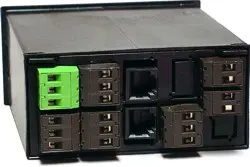
Key Features
- Meets 1/8 DIN Standard.
- Installs from front of panel.
- Short depth behind the panel: only 4" (102 mm) plus connectors.
- Understated 0.157" (4 mm) thick bezel.
- Meets NEMA 4X (IP-65) for high-pressure wawshdon when panel mounted.
- Screw clamps connectors meet VDE / IEC / UL / CSA safety standards.
- Rugged GE Lexan® housing material.
- Safety certified per EN 61010-1.
Dimensions
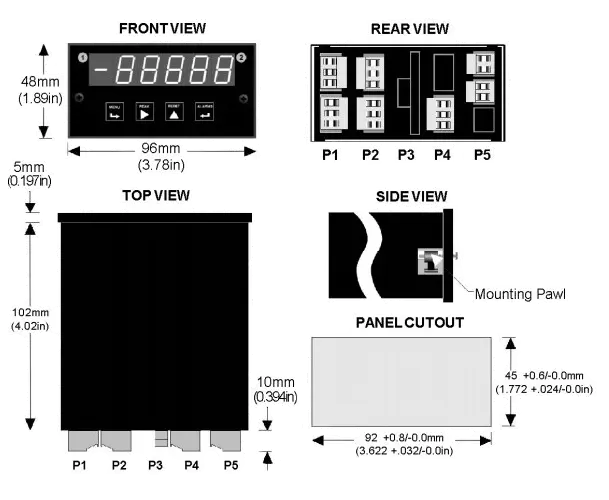
Maximum panel thickness: 4.5 mm (0.18")
Weight of base meter: 210 g (7.4 oz) typical (DPM, counter, timer, 6-digit remote display)
Weight of option boards: 30 g (1.0 oz) typical per board (analog output, relay output, communications)
Tightening Torque - Connectors: Screw terminal connectors: 5 lb-in (0.56 Nm)
Tightening Torque - Pawls: Digital Panel Meter Case Pawls: 5 lb-in (0.56 Nm)
Dimensioned CAD assembly drawings in EPRT, STEP, x_t. dwg, pdf file formats: Laureate-meter-case.zip (zipping prevents browser from opening CAD files as text files).
Panel Mounting
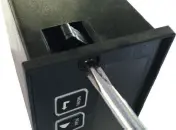 Slide the meter into a 45 x 92 mm 1/8 DIN panel cutout. Ensure that the provided gasket is in place between the front of the panel and the back of the meter bezel.
The meter is secured by two pawls, each held by a screw, as illustrated. Turning each screw counterclockwise extends the pawl outward from the case and behind the panel. Turning each screw clockwise further tightens it against the panel to secure the meter.
Slide the meter into a 45 x 92 mm 1/8 DIN panel cutout. Ensure that the provided gasket is in place between the front of the panel and the back of the meter bezel.
The meter is secured by two pawls, each held by a screw, as illustrated. Turning each screw counterclockwise extends the pawl outward from the case and behind the panel. Turning each screw clockwise further tightens it against the panel to secure the meter.
Turning each screw counterclockwise loosens the pawl and retracts it into its well. This position allows installed meter to be removed from their panel, or new meters to be installed in a panel. Do not remove the screws from their pawls. Doing so would cause the screw and pawl to fall off and likely get lost. Do not overtighten so as not to damage the plastic parts.

Operation as a 4-20 mA Transmitter
With the optional analog output board, Laureate RTD temperature meters can serve as superb, isolated 4-20 mA transmitters. The analog output is scaled to the display, which is linearized to °C or °F and is exceptionally accurate. The analog output further tracks the high read rate of the meter, at up to 60 readings per second at 60 Hz power. Fast update rates are beneficial in many closed-loop and PID control applications.
 |
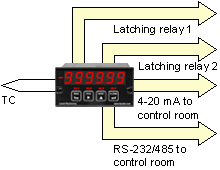 |
Operation as a Fast Controller
By using the optional dual contact relay or dual solid state relay output options, Laureate temperature meters can monitor processes and provide alarms or shutoffs when these processes exceed normal limits. A band deviation operating mode can be selected for each relay, where an alarm is generated whenever the reading is a selected number of counts above or below the setpoint. Relay operation can be selected as latching or non-latching. When an alarm or shutdown condition is reached, a latched output will remain in the alarm condition until it is reset by a front panel pushbutton, via the serial interface, or via the rear connector.
DLS-XLOG2
XLog2 Data logging Software
CON01
CON01 Connector
IPC
Splashproof Cover
CBL01
RS232 Cable for Meters
CBL02
USB-to-RS232 Adapter Cable
CBL04
RS232 Cable for LT Transmitters
CBL05
USB Data Cable for Meters
CBL06
USB-to-RS485 Adapter Cable
CBL07
USB Programming & Data Cable
CBL08
RS485 Splitter Cable
BKBD
RS485 RJ11 Terminal Block Adapter
Modular Design for Maximum Flexibility at Minimum Cost
All boards are isolated from meter and power grounds. Optional Plug-in-Play boards for communications and control include Ethernet, WiFi, serial communication boards, dual or quad relay boards, and an analog output board. Laureates may be powered from 85-264 Vac or optionally from 12-32 Vac or 10-48 Vdc. The display is available with bright red or green 0.56" (14.2mm) high LED digits. The 1/8 DIN case meets NEMA 4X (IP65) specifications from the front when panel mounted. Any setup functions and front panel keys can be locked out for simplified usage and security. A built-in 5, 10, 12, or 24 Vdc excitation supply can power transducers, eliminating the need for an external power supply. All power and signal connections are via UL / VDE / CSA rated screw clamp plugs.
The Laureate™ Series features modular design with up to 7 isolated plug-in boards, applicable to all Laureate 1/8 DIN Panel Meters.

Modular Hardware
The design of the Laureate™ Series is modular for maximum flexibility at minimum cost. All boards are isolated from meter and power grounds. The base configuration for panel meters or counter consists of a main module (with computer and plug-in display boards), a power supply board, and a signal conditioner board. Optional plug-in-play boards include an isolated setpoint controller board, an isolated analog output board, and an isolated digital interface board. Modular design and a choice of plug-in options allow the Laureate to be customized for a broad range of applications from simple monitoring to control and computer interface. There can be up to five plug-in boards in a 1/8 DIN Laureate.

Connecting Laureate Panel Meters to a Local Area Network (LAN)
Up to 30 Laureate Panel Meters and/or LT Transmitters can be configured for RS485 and daisy-chained to an LT Transmitter using Laurel’s High Speed Ethernet-to-RS485 converter board for seamless LAN integration. Alternatively, Laurel LTE series Ethernet transmitters can connect directly to a LAN via an Ethernet cable. Setup for both configurations is streamlined using Laurel’s free Instrument Setup Software, which simplifies node discovery and transmitter configuration.
Flexible Communication Options for Panel Meters
Laureate Panel Meters can be equipped with Laurel communication boards to support various interfaces and protocols. These include serial interfaces with ASCII or Modbus RTU protocols, and Ethernet interfaces with web access, ASCII, or Modbus TCP/IP protocols, ensuring versatile connectivity for your commercial applications.

What are 1/8 DIN Panel Meters for RTD Temperature?
In various industrial, laboratory, and commercial settings, precise temperature measurement and control are essential for operational efficiency, safety, and quality assurance. 1/8 DIN Panel Meters for RTD (Resistance Temperature Detector) temperature are specialized instruments designed to deliver accurate and reliable temperature readings from RTD sensors. These Panel Meters are critical in environments where temperature precision is paramount, offering high accuracy and robust functionality in a compact form. This section provides a comprehensive overview of their design, functionality, technical specifications, and applications.
Understanding 1/8 DIN Panel Meters
DIN Size: The term “1/8 DIN” refers to the standardized physical size of these Panel Meters, based on the Deutsches Institut für Normung (DIN) standard, a set of guidelines for designing and manufacturing panels and controls. A 1/8 DIN size typically measures approximately 96 x 48 mm (3.78 x 1.89 inches), making these Panel Meters compact and ideal for integration into control panels or equipment displays where space is limited.
Panel Meters: These devices display numerical values digitally, offering clear and precise readings compared to analog meters. The digital format minimizes reading errors and enables quick interpretation of temperature data, enhancing operational efficiency.
RTD Temperature Sensors
RTD Sensors: RTDs are temperature sensors that measure temperature by correlating the electrical resistance of a metal element, typically platinum, with temperature. The most common RTD, the PT100, has a resistance of 100 ohms at 0°C. RTDs are renowned for their high accuracy, stability, and repeatability, making them ideal for applications requiring precise temperature measurements.
How RTDs Work: As temperature changes, the resistance of the RTD element changes proportionally. This resistance variation is measured and converted into a temperature reading. RTDs offer superior accuracy compared to other sensors like thermocouples, especially in moderate temperature ranges.
Functionality of 1/8 DIN Panel Meters for RTD Temperature
Input and Signal Processing: 1/8 DIN Panel Meters for RTD temperature are designed to interface directly with RTD sensors, such as PT100 or PT1000. They process the resistance signal from the RTD, applying signal conditioning, amplification, and conversion to produce an accurate temperature value. These Panel Meters support 2-wire, 3-wire, or 4-wire RTD configurations to minimize errors caused by lead resistance.
Display and Output: These Panel Meters feature high-visibility digital displays, typically LED or LCD, showing temperature in units like Celsius or Fahrenheit. Advanced models offer programmable alarms, analog outputs (e.g., 4-20mA), and communication interfaces (e.g., RS-485, Modbus RTU) for integration with control systems or data logging platforms.
Calibration and Accuracy: To ensure precise measurements, these Panel Meters require calibration to account for sensor variations and environmental factors. They typically offer high accuracy, often ±0.1°C or better, making them suitable for demanding applications.
Key Features and Benefits
-
Compact Size: The 1/8 DIN size allows these Panel Meters to fit into space-constrained control panels, optimizing space without compromising functionality.
-
High Accuracy: Designed for precise temperature measurements, these Panel Meters ensure reliable data for critical processes, reducing errors and enhancing quality control.
-
Wide Temperature Range: Compatible with RTD sensors, these Panel Meters can measure temperatures typically ranging from -200°C to 850°C, depending on the sensor type.
-
Ease of Integration: Standardized DIN mounting and user-friendly interfaces simplify installation into existing or new systems, minimizing setup time.
-
User-Friendly Interface: High-visibility displays, programmable setpoints, and alarm functions provide intuitive operation and quick access to temperature data.
-
Robust Construction: Built with rugged enclosures and high IP ratings (e.g., IP65), these Panel Meters withstand harsh industrial environments, including dust and moisture.
Technical Specifications
Typical specifications for 1/8 DIN Panel Meters for RTD temperature include:
- Input Compatibility: Supports PT100, PT1000, or other RTD types with 2-, 3-, or 4-wire configurations.
- Accuracy: ±0.1°C or better, with automatic lead resistance compensation.
- Display: 4-6 digit LED or LCD with customizable brightness and units.
- Power Supply: 12-24V DC or 85-265V AC.
- Communication: RS-232, RS-485, Modbus RTU, or Ethernet.
- Environmental Rating: IP65 or higher for front panel protection.
- Operating Temperature: -10°C to 50°C, suitable for industrial environments.
Conclusion
1/8 DIN Panel Meters for RTD temperature are valuable instruments for precise temperature measurement in various fields. Their compact size, high accuracy, and ability to interface with RTD sensors make them ideal for industrial, laboratory, and environmental applications. By providing clear, digital temperature readouts, these Panel Meters enhance control, efficiency, and safety in temperature-sensitive processes.
Where are 1/8 DIN Panel Meters for RTD Temperature Used?
In industrial automation, process control, and laboratory environments, accurate temperature measurement and monitoring are critical. 1/8 DIN Panel Meters for RTD temperature are specialized devices designed to meet these needs with high precision and reliability. Their compact size and robust features make them versatile tools across multiple industries. Below is a detailed exploration of their applications.
-
Manufacturing and Process Control
In manufacturing, precise temperature control ensures product quality and consistency. 1/8 DIN Panel Meters monitor temperature readings from RTD sensors in processes like chemical reactions, metal heat treatment, or plastic molding, maintaining tight regulation to prevent defects or inefficiencies. -
HVAC Systems
Heating, Ventilation, and Air Conditioning (HVAC) systems rely on accurate temperature measurement for comfort and efficiency. These Panel Meters monitor temperatures in air handlers, refrigerant lines, or heating elements, enabling timely adjustments to optimize energy use and maintain indoor conditions. -
Food and Beverage Industry
In food processing, maintaining specific temperature ranges is crucial for safety and quality. These Panel Meters are used in pasteurization, cooking, cooling, or storage processes to ensure compliance with health regulations and consistent product quality. -
Laboratory Applications
Laboratories require precise temperature control for experiments and equipment calibration. These Panel Meters monitor temperature-sensitive equipment like incubators, water baths, or environmental chambers, ensuring reliable conditions for scientific research. -
Energy Management
In energy management systems, these Panel Meters track temperatures in power plants, water treatment facilities, or renewable energy installations, supporting efficient energy production and preventing equipment failures. -
Automotive Industry
In automotive manufacturing and testing, these Panel Meters monitor temperatures in engines, battery systems, or climate control units, ensuring performance, safety, and compliance with emission standards. -
Aerospace and Defense
In aerospace and defense, where precision is critical, these Panel Meters monitor temperatures in avionics, propulsion systems, or environmental controls, ensuring reliable operation in demanding conditions.
Conclusion
1/8 DIN Panel Meters for RTD temperature are versatile instruments with applications across manufacturing, HVAC, food and beverage, laboratories, energy management, automotive, and aerospace industries. Their compact size, high accuracy, and robust integration capabilities make them ideal for monitoring and controlling temperature in diverse environments. By providing reliable temperature data, these Panel Meters ensure operational efficiency, safety, and compliance, making them essential for modern industrial and scientific applications.
Less Information.








